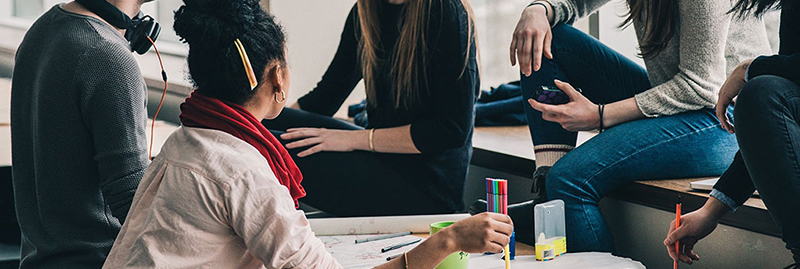RTI refers to Response to Intervention – a model and plan of action to care for the academic needs of students. This model is often illustrated by a 3 tiered pyramid. The bottom represents general instruction given to all students. The middle section, or tier 2 instruction is more specialized to students who may need some help. The tip of the pyramid, or tier 3, is intensive intervention for students who really need specific assistance. MTSS stands for multiple tiered system of support. And while this may sound a lot like RTI, MTSS encompasses RTI and then some. How so? Well, beyond just addressing students basic academic needs, MTSS includes engaging students and providing emotional supports, continuously. MTSS is like the big picture — a 3-dimensional pyramid where the levels of support are stacked and often overlapped.
Why do programs like this matter? One key piece includes the research done by Robert Belfanz and a team of his researchers. They found that early interventions, at the middle school and freshmen level, can drastically affect a student’s future learning and well being. Once a student is in 9th grade, much of their habits, be it learning, school attendance, or behavioral issues, have been formed.
The success of a student isn’t solely determined by one or the other of these skill sets. For a student to be truly successful, they need both academic and emotional help.
How does MTSS facilitate this? Let’s take a look at how MTSS can help students in Academics, Behavioral Issues, as well as some keys to success in implementing this program.
Behavior
How can MTSS help with a student’s behavior? Children often act out in school because of deeper issues. Teachers don’t have control over what happens at home, where students may deal with instability. In addition, depression, anxiety, low self-esteem, and various other mental health concerns can factor in. If behavioral issues are simply treated with discipline, the underlying cause will still be there. With MTSS, teachers can identify specific students’ struggles, and help them based on their needs. Students may meet with trusted teachers, or perhaps the school’s guidance counselor and/or mental health counselor.
To provide time for these interventions, some schools may set aside time during lunch, or before or after school. By means of a flex block, or activity/enrichment period, some school have allowed their students to get emotional help during in the school day. That way, students aren’t at risk of missing out on any instructional time.
Often, behavioral issues also affect a student’s academics. So helping students behaviorally will, as a result, likely improve their academic standing as well. How does MTSS help kids succeed academically?
Academics
Identifying a student’s academic struggles may be the easy part. Noticing slipping grades, struggling on tests and homework. The challenge can be, how do you provide effective support for a student? Every student learns differently, and often the general instruction you give to your entire class may not be enough to hold the interest of individual students. MTSS can help you to not just pinpoint where a student struggles, but how they learn best. You can then match them with staff members who can give them the most effective assistance.
As brought out earlier, some schools may actually create a specific block of time to give students help during the school day, providing emotional help, enrichment opportunities, and of course extra academic help for the kids that need it.
PLCs
This might sound like a pretty big, complicated task! How can staff members be on the same page, and know how to help specific students? The answer is good communication.
Staff teams, or professional learning committees (PLCs), are so important in the decision making process, and for the function of the MTSS model itself. Individual students will have different needs, and often can be better reached by a specific staff member, or specific strategy. Without communicative teams, the needs of individual students may not be effectively identified. Yes, basic data like a student’s grades will tell you what you need to know about their academic standing in a particular class. But the why requires more knowledge of the student, and could involves knowing their strengths, where they struggle, how they’re doing emotionally, the current state at home, etc. When various staff members can meet as a team, even at times including the student’s parent if possible, a far more effective intervention can take place, one that allows for the students needs to truly be met.
MTSS and RTI are both effective. MTSS may not be the new RTI, but it’s certainly a way to keep the lines of communication between students and teachers strong, and give all students a fair shot at being the very best they can be.





